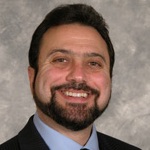The integration and collaboration of hospitals with their physicians and outpatient referral sources triggered by new health care legislation are leading to a paradigm shift in health care—a change that can help with the challenges of the future. For example, with bundled payments, many will be paid in lump sums which could lead to more sharing of responsibility. In this way, bundled payments can not only streamline the cost of healthcare but can also help to improve efficiency and quality of care.
Of course, the task of integrating and harnessing the collective power of hospital departments is easier said than done. There is no greater challenge for hospital efficiency than the integration of the emergency department and the hospitalists. These two specialties have conflicting interests because they have very different sets of responsibilities and two entirely different ways of thinking. The ED must take all comers; hospitalists can be selective. The ED, by nature of the business must be more superficial and focused in patient encounters, while hospitalists have to take a deeper and broader approach. The hospitalist deals with one patient at a time, whereas ED docs are constantly multitasking. The ED must move patients through as quickly as possible to discharge or admission, while the hospitalist needs to be more methodical in the gathering of information and treatment of patients.
Using evidence-based workup protocols is one way to bring these two departments together. Joint protocols can assure that both parties get the important information they need in the minimum amount of time while using a defined set of resources. If hospitalists and emergency physicians at each individual hospital come to an agreement on which tests will be ordered under what circumstances and how best to share this information, then emergency physicians will know up front what documentation they need to present to the hospitalists in order for them to agree to admit a patient. This would serve the double purpose of providing the data that hospitalists must have while also saving time for the ED. In addition, this can be done in a truly cutting edge way with the growth of mobile technology in healthcare and the increased capacity for collaboration this can provide.
Like any corporate merger, there is no simple formula for bringing these disparate entities together to increase efficiency. However, the stakes for the future of healthcare and our economy call for great changes. The growing unification of these two departments will be closely watched as a bell weather of the progress of future integration across the entire hospital.






















